
Life Bird #473
December 21st, 2017
(Part 1)
The next day I tried again and hit gold. The Black-Throated Gray Warbler appeared east of the ridge. Many birders that day enjoyed good views and, for the camera-equipped, photo ops as it actively foraged in a stand of buckthorn.

Black-Throated Gray Warbler breeds in the west from Arizona and New Mexico, up to the southwestern tip of British Columbia. It prefers pine and mixed oak-pine forests. Like most warblers, it is a dedicated insectivore (although, as suggested by its attraction to buckthorns at Mud Lake, it will also take the occasional berry.) This bird is often considered part of a "superspecies" with the closely related warblers Black-Throated Green (our local representative), Townsend's, Hermit, and Golden-Cheeked. It is the least colorful of the bunch (unsurprising for a southwest bird), but still has a certain somber handsomeness about it and a little spot of color, especially on the breeding adult male. The one in Ottawa was probably a young (first-year) bird.
Sadly, but not unexpectedly, this lost waif was not able to contend with an Ottawa winter. It did surprisingly well for awhile, until the big snow arrived. That morning, Bruce di Labio went to Mud Lake and found it lying motionless at the base of a tree. He picked it up and cradled it in his hand to try to warm it, but it was too late. A silver lining on the cloud is that now the Royal Ontario Museum has a specimen for a very rare bird in our region.
I find it interesting that the same man who found the warbler was the man who was there to try to rescue it in its final moments. It was the same with the Bullock's Oriole in Pakenham: Ray Holland found it, and Ray Holland was there to rescue it when the winter turned harsh. (And for the oriole the ending was happy: it was eventually released in British Columbia after convalescing at the Wild Bird Care Centre.) Even though many, many people went to see both birds, those men were there when it counted. It speaks to their dedication and their skill as field-naturalists.
And now for more photographs from Mud Lake.
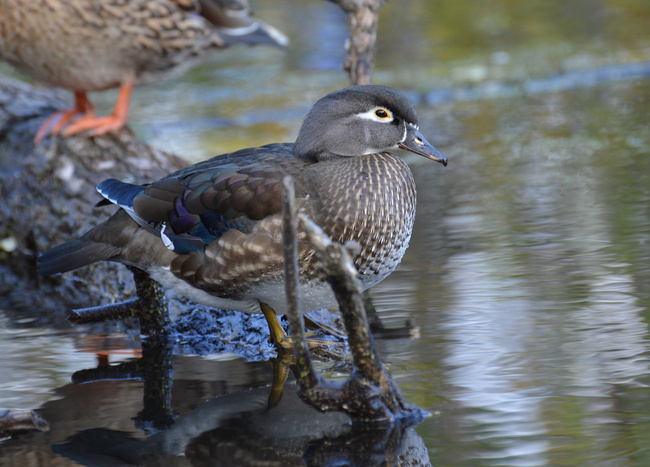
Wood Duck (female)
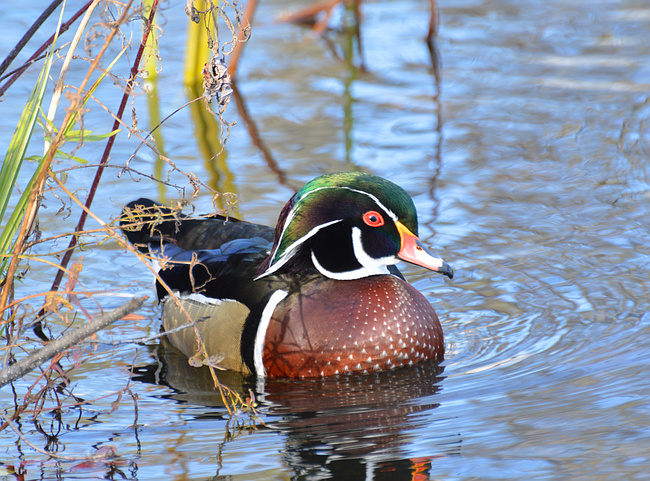
Wood Duck (male)
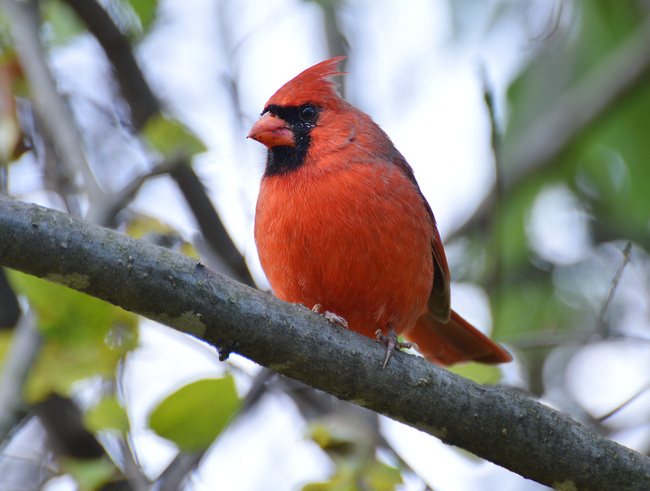
Northern Cardinal
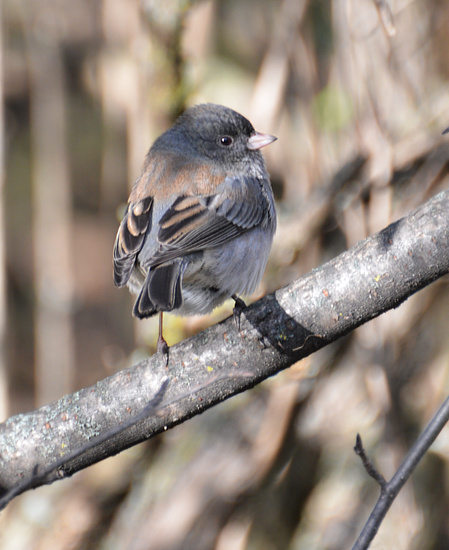
Dark-Eyed Junco
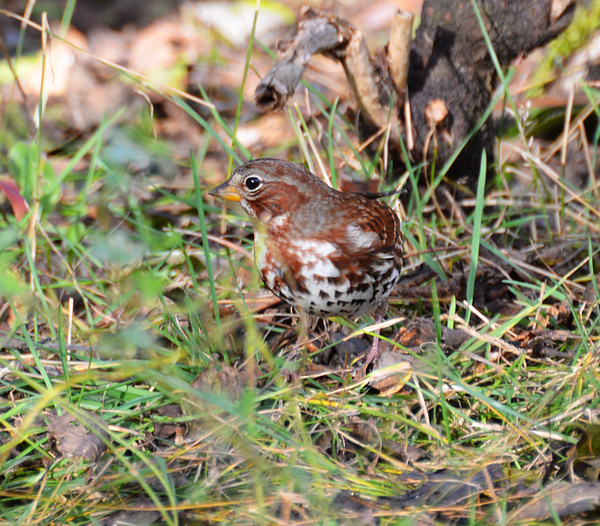
Fox Sparrow
Fox Sparrows only appear in Ottawa in migration. This one was a little late moving on to its wintering grounds (but much better able to deal with being late than an insectivorous warbler.) It was in with a group of White-Throated Sparrows and Dark-Eyed Juncos, all coming out to forage on birdseed that someone had scattered on the trail. But it was much shyer than they, quickly darting back undercover whenever a human got close. I've only managed a few photos of this bashful sparrow (one of my favorites) over the years, and I still haven't gotten one that I'm truly happy with.
December 21st, 2017
(Part 1)
The next day I tried again and hit gold. The Black-Throated Gray Warbler appeared east of the ridge. Many birders that day enjoyed good views and, for the camera-equipped, photo ops as it actively foraged in a stand of buckthorn.

Black-Throated Gray Warbler breeds in the west from Arizona and New Mexico, up to the southwestern tip of British Columbia. It prefers pine and mixed oak-pine forests. Like most warblers, it is a dedicated insectivore (although, as suggested by its attraction to buckthorns at Mud Lake, it will also take the occasional berry.) This bird is often considered part of a "superspecies" with the closely related warblers Black-Throated Green (our local representative), Townsend's, Hermit, and Golden-Cheeked. It is the least colorful of the bunch (unsurprising for a southwest bird), but still has a certain somber handsomeness about it and a little spot of color, especially on the breeding adult male. The one in Ottawa was probably a young (first-year) bird.
Sadly, but not unexpectedly, this lost waif was not able to contend with an Ottawa winter. It did surprisingly well for awhile, until the big snow arrived. That morning, Bruce di Labio went to Mud Lake and found it lying motionless at the base of a tree. He picked it up and cradled it in his hand to try to warm it, but it was too late. A silver lining on the cloud is that now the Royal Ontario Museum has a specimen for a very rare bird in our region.
I find it interesting that the same man who found the warbler was the man who was there to try to rescue it in its final moments. It was the same with the Bullock's Oriole in Pakenham: Ray Holland found it, and Ray Holland was there to rescue it when the winter turned harsh. (And for the oriole the ending was happy: it was eventually released in British Columbia after convalescing at the Wild Bird Care Centre.) Even though many, many people went to see both birds, those men were there when it counted. It speaks to their dedication and their skill as field-naturalists.
And now for more photographs from Mud Lake.

Wood Duck (female)

Wood Duck (male)

Northern Cardinal

Dark-Eyed Junco

Fox Sparrow
Fox Sparrows only appear in Ottawa in migration. This one was a little late moving on to its wintering grounds (but much better able to deal with being late than an insectivorous warbler.) It was in with a group of White-Throated Sparrows and Dark-Eyed Juncos, all coming out to forage on birdseed that someone had scattered on the trail. But it was much shyer than they, quickly darting back undercover whenever a human got close. I've only managed a few photos of this bashful sparrow (one of my favorites) over the years, and I still haven't gotten one that I'm truly happy with.
| ← | → |

Mike
December 30th, 2017 at 11:50 am
I always like the warm colors of the Fox Sparrows!
Glad you saw the Black-Throated Grey, although I'm sad he didn't make it.